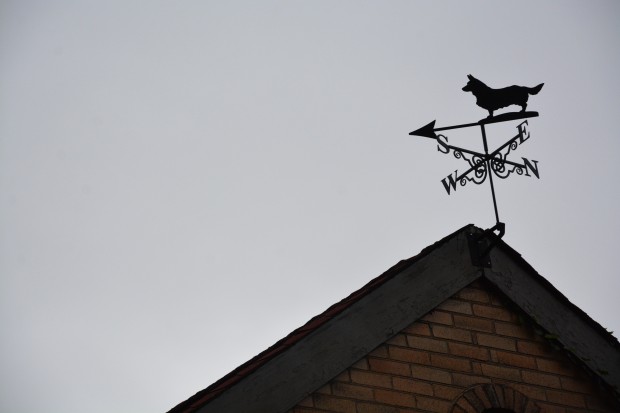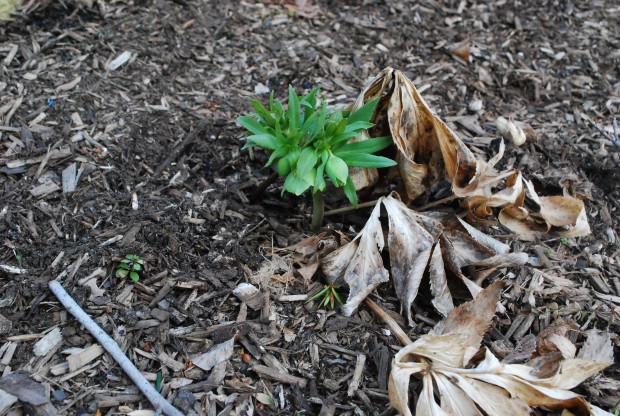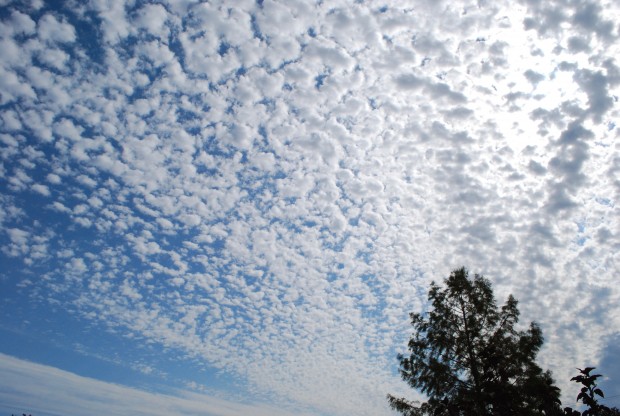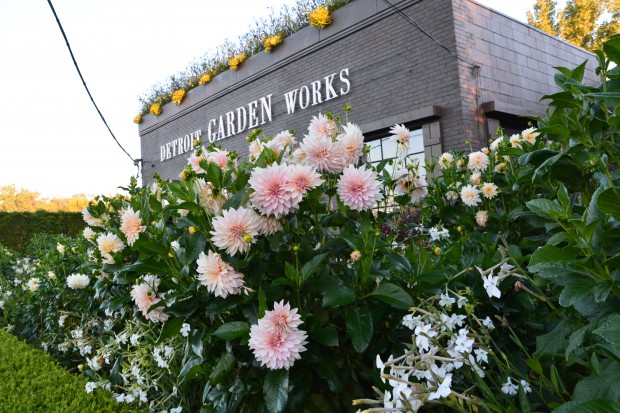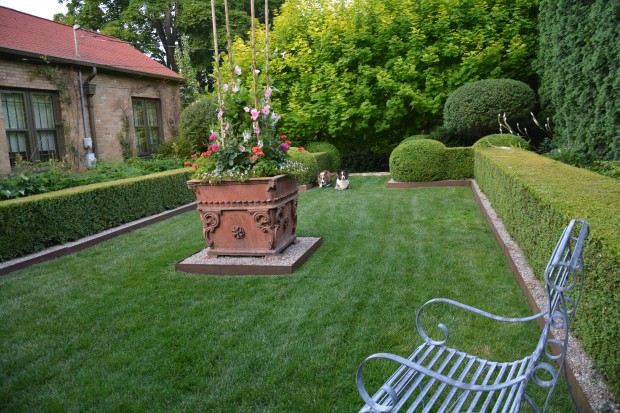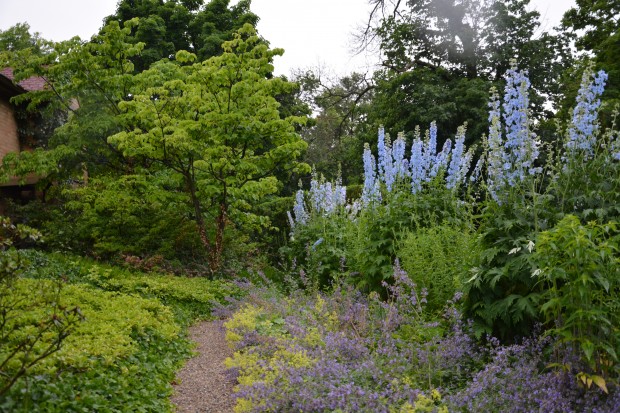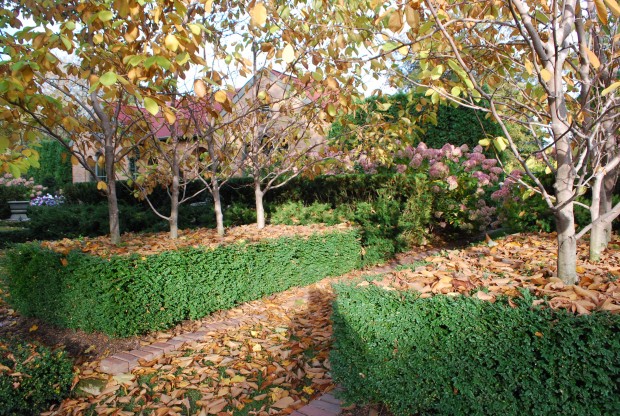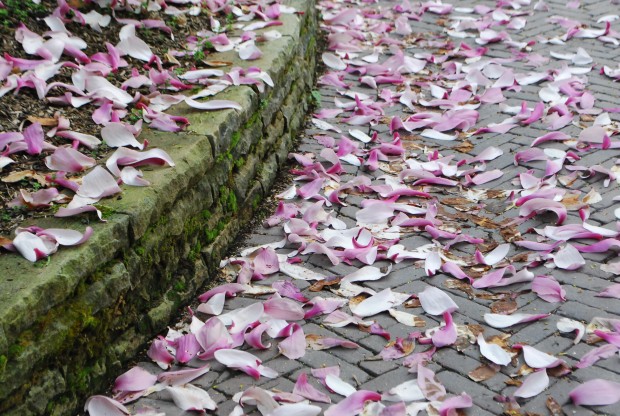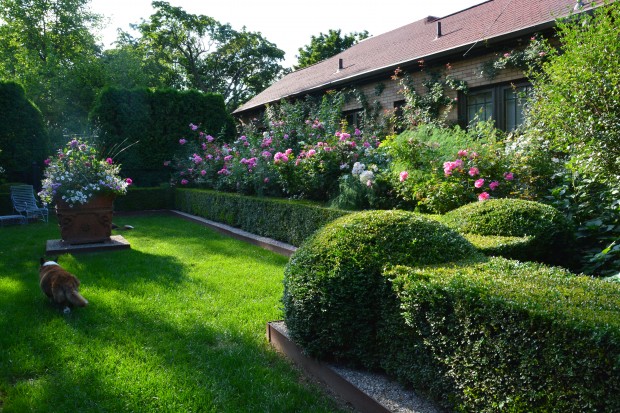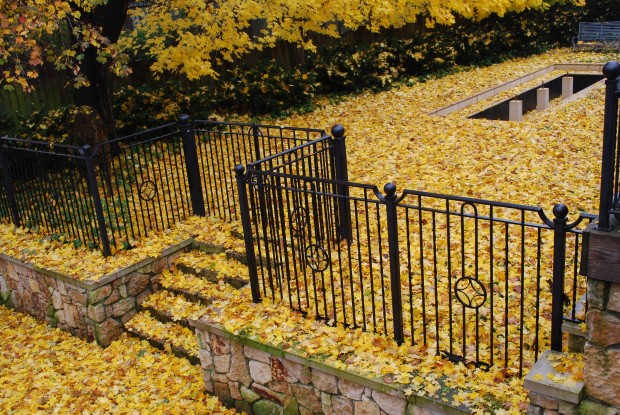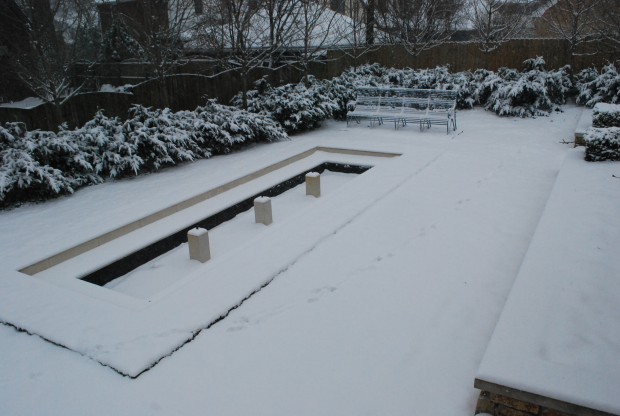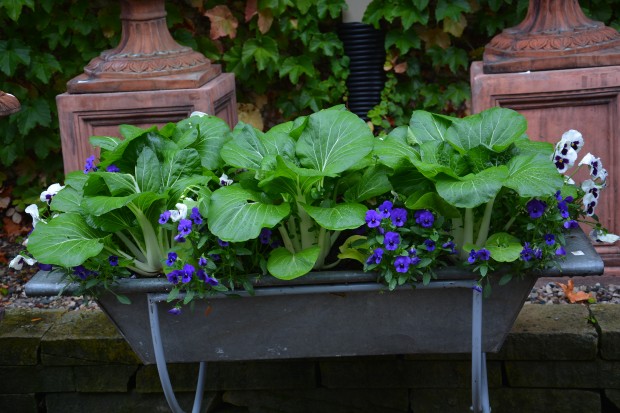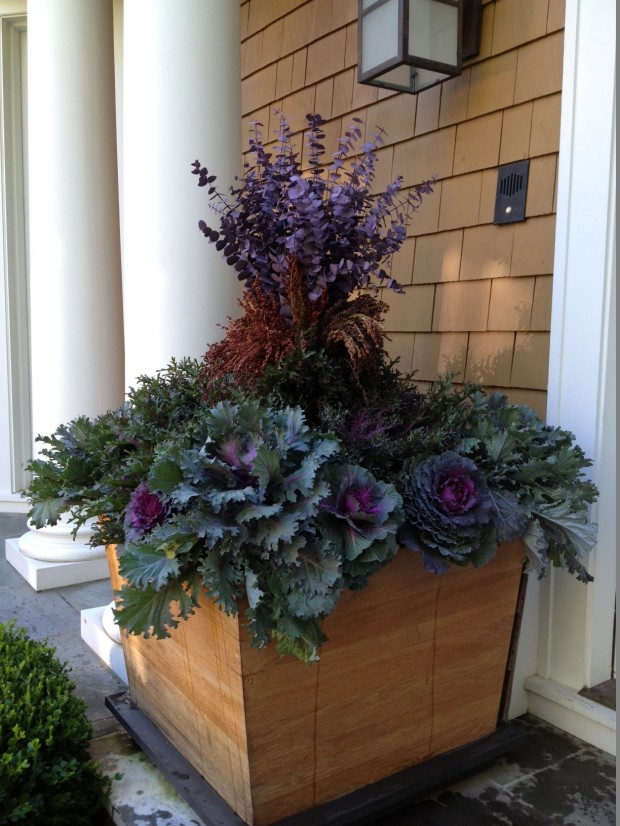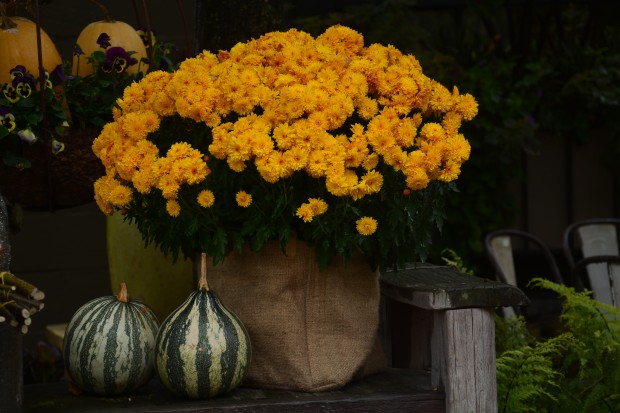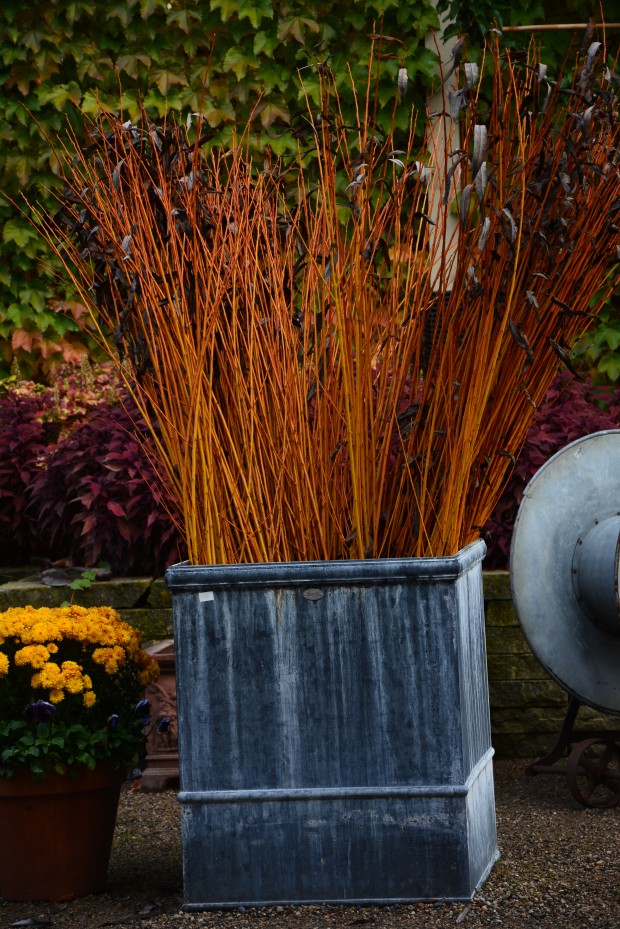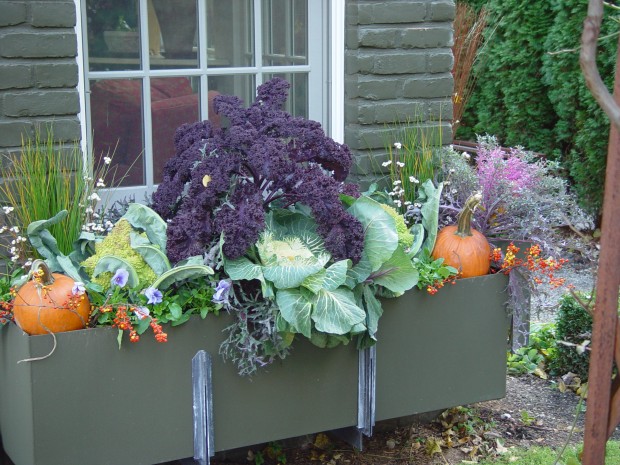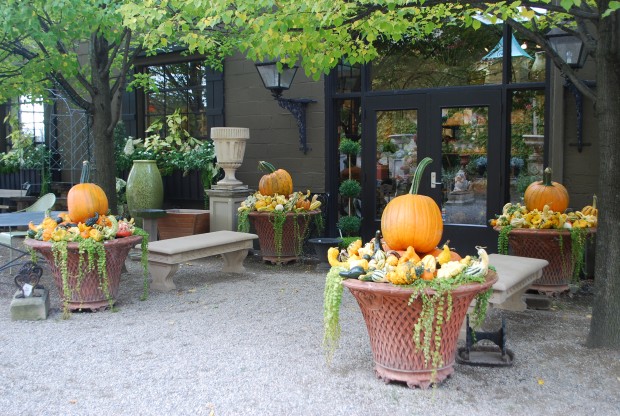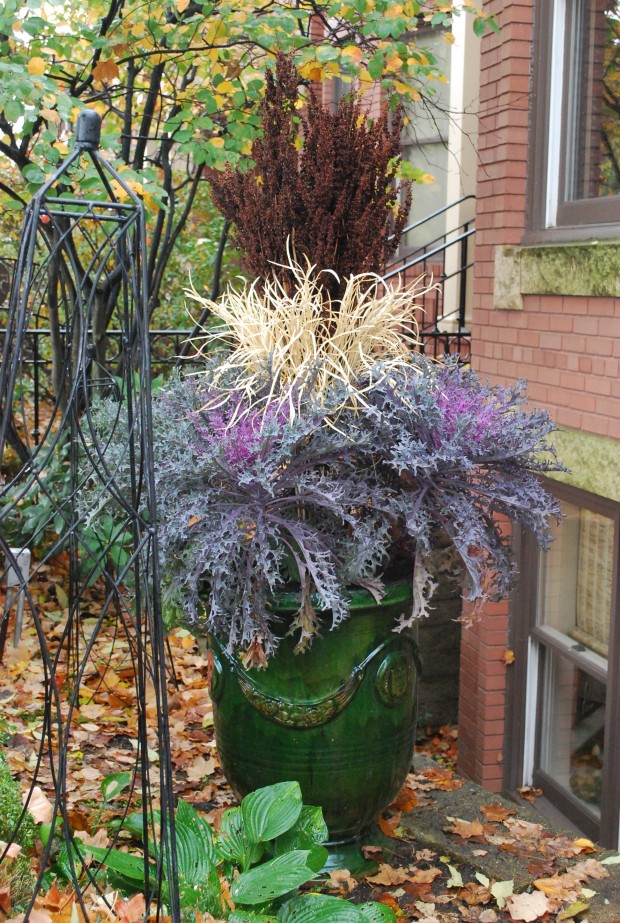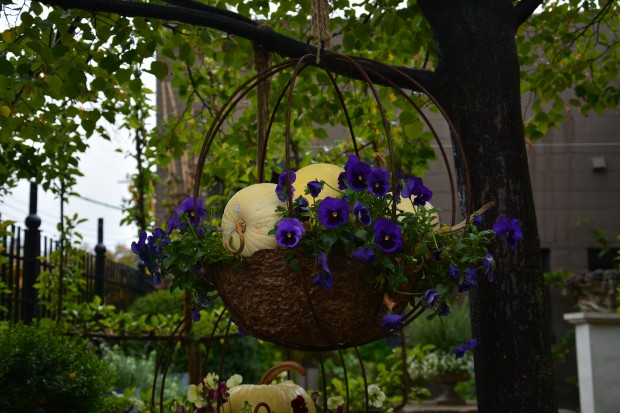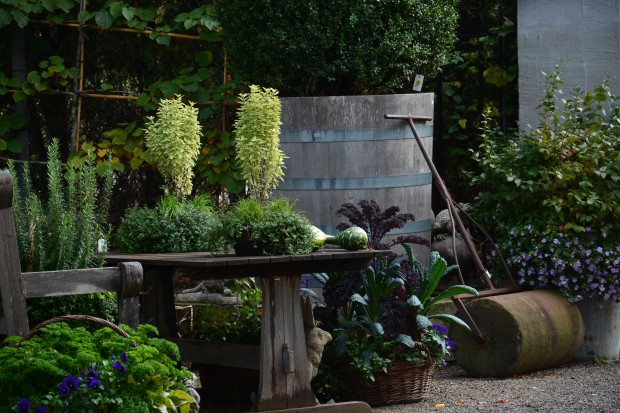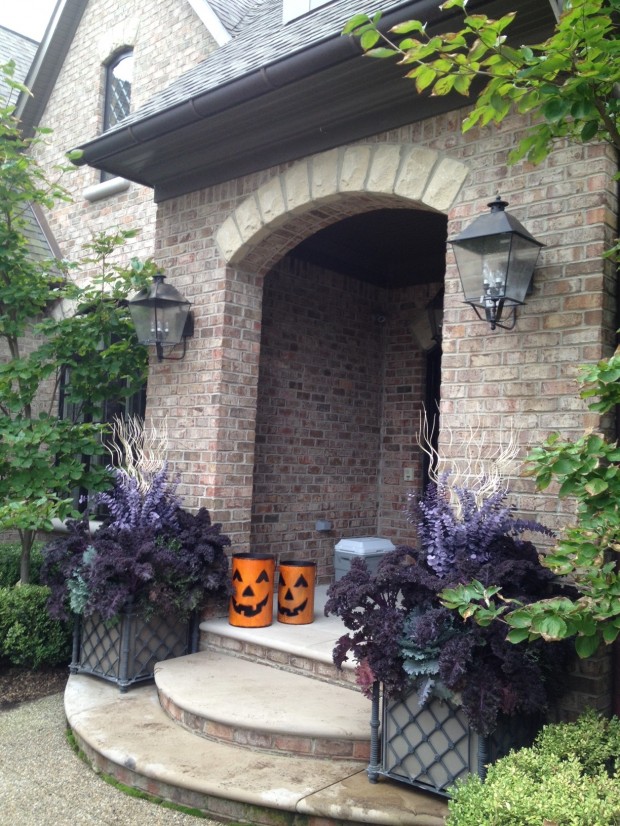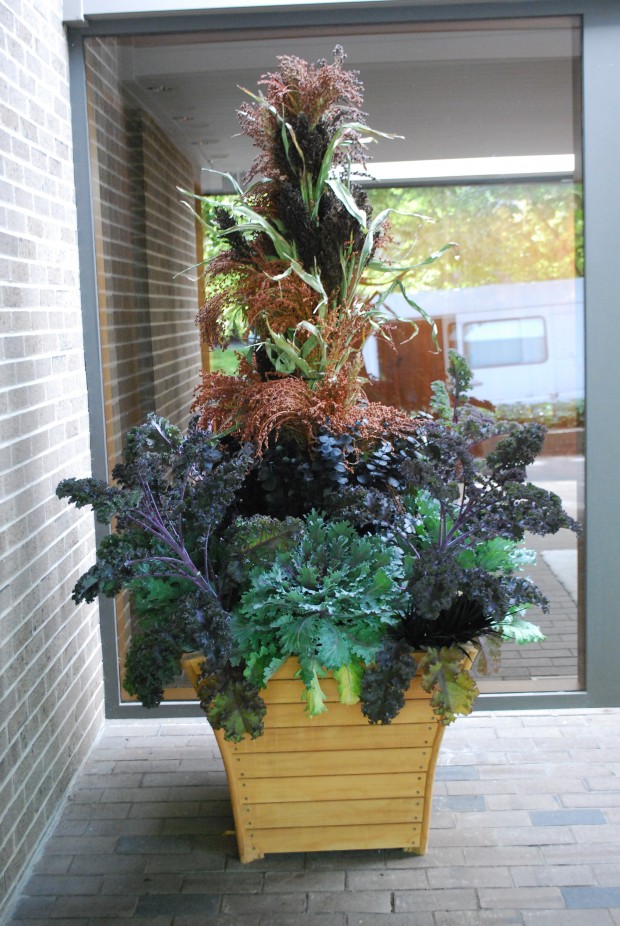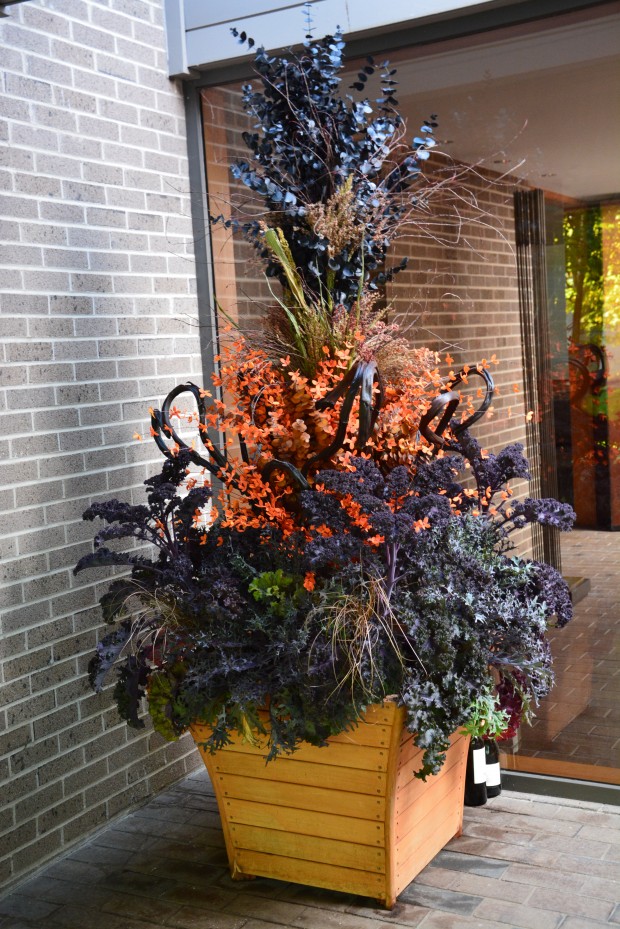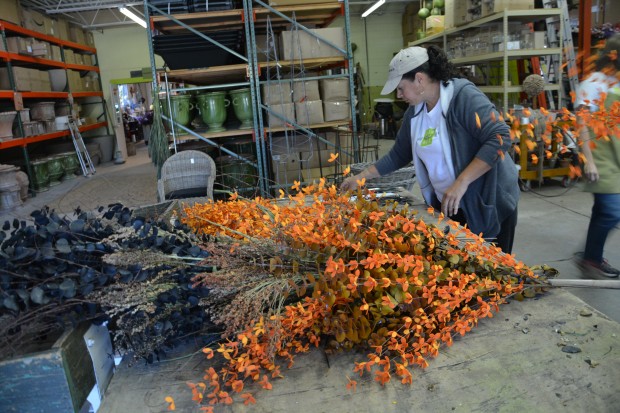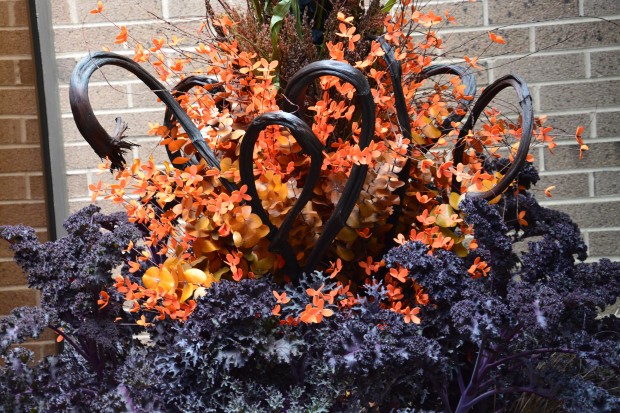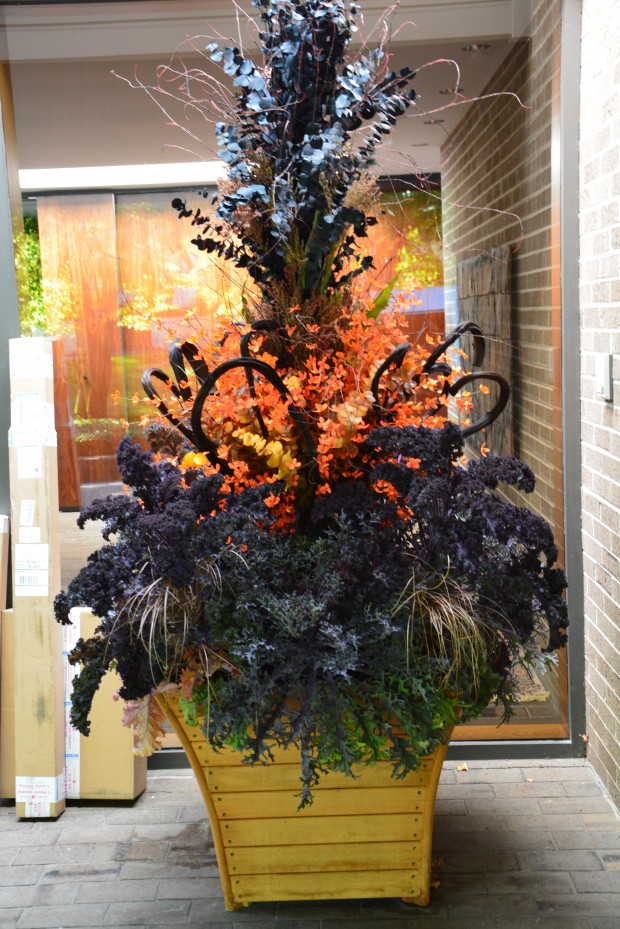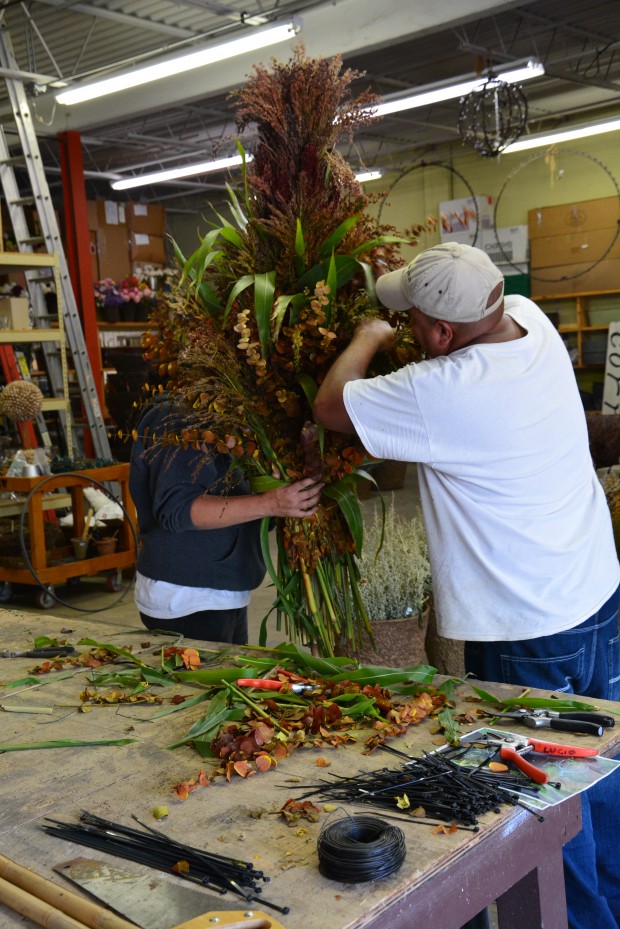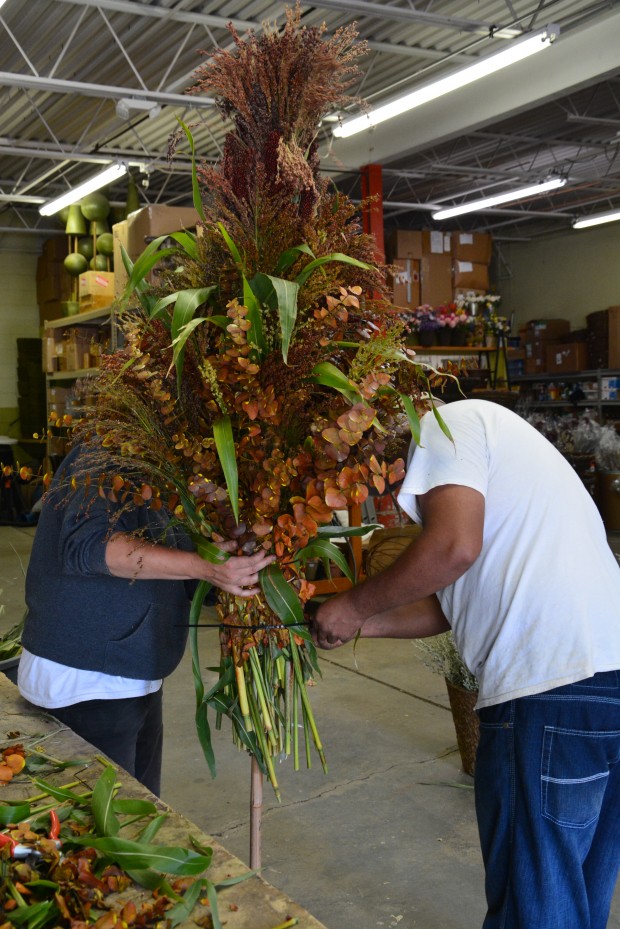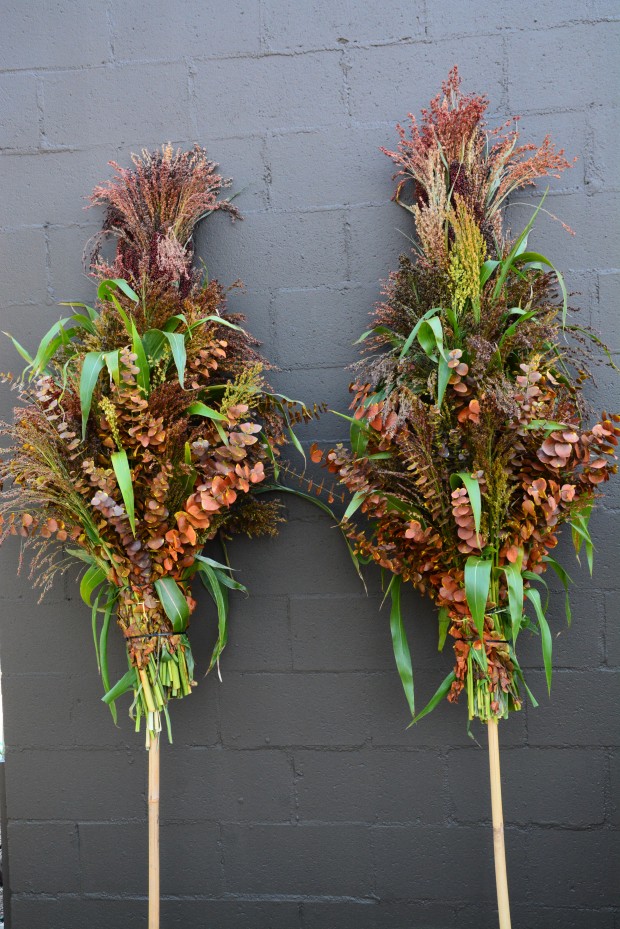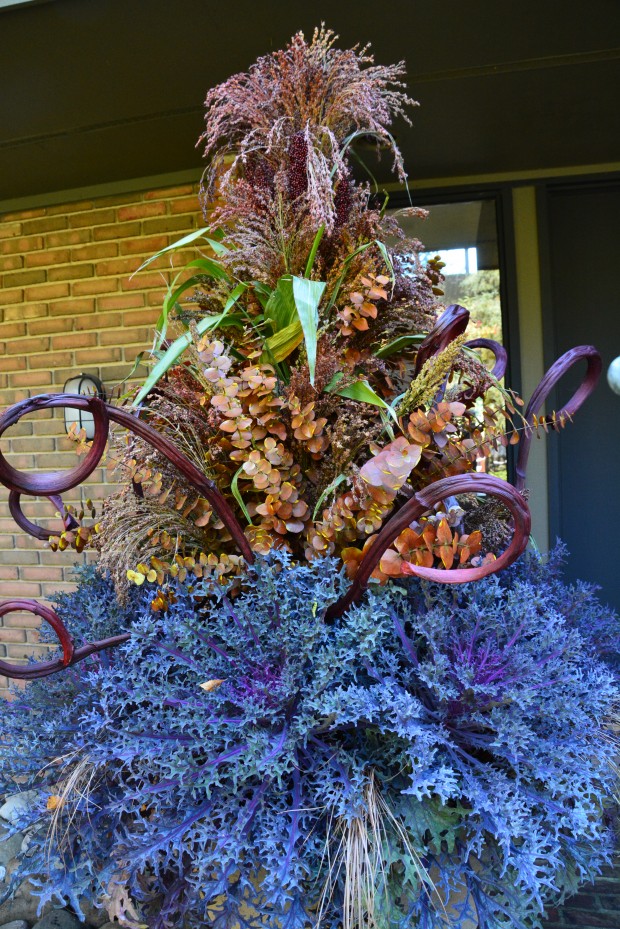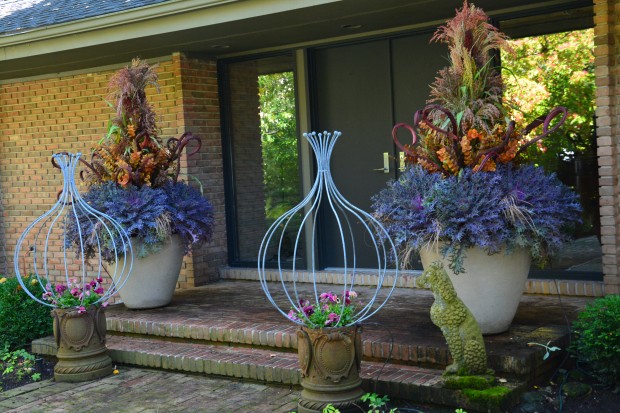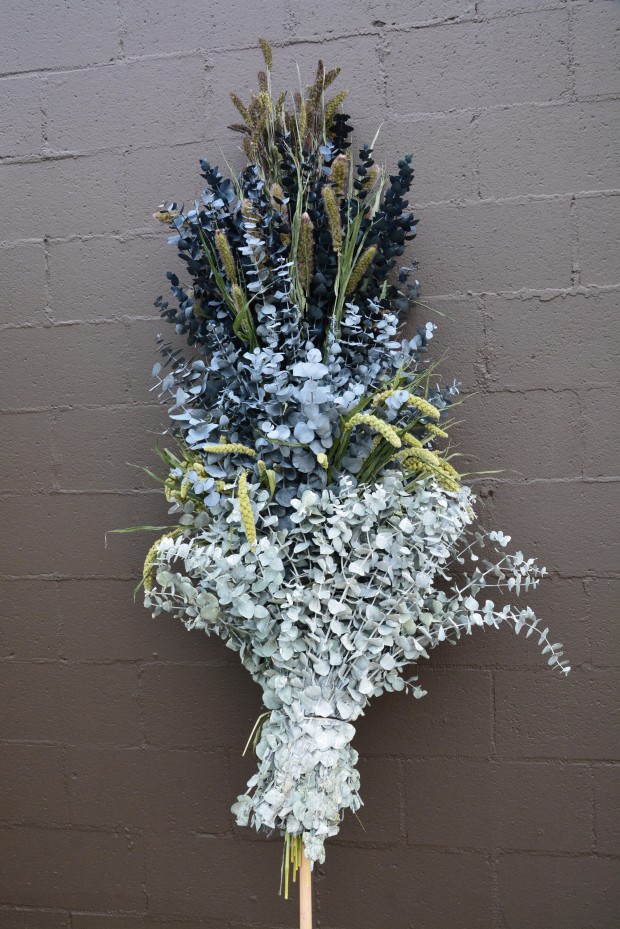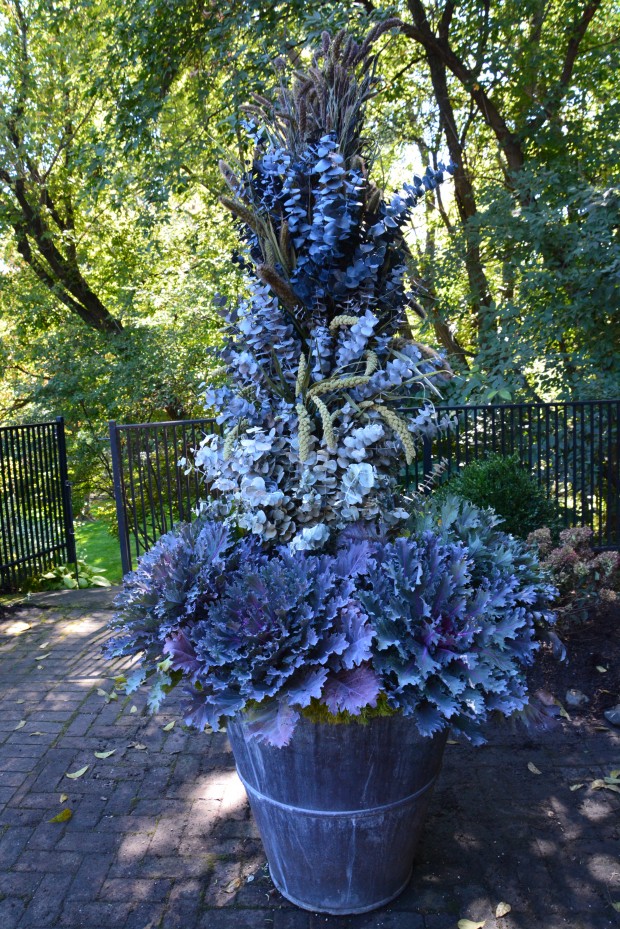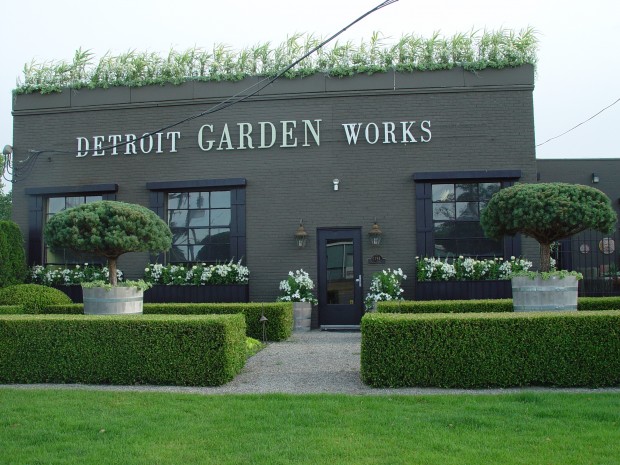 Boxwood is one of the most versatile and robust growing evergreens available for planting in my zone. There are a number of great cultivars. Green Velvet matures at 3′ by 3′, and keeps its great color all winter. Green Mountain is virtually identical to Green Velvet, but grows to 4′ tall by 3′ wide. Buxus microphylla koreana, pictured above, is hardy in this full south sun location, and can grow to 5′ by 5′. The winter color is a dull orangy bronze. Winter Gem boxwood is incredibly hardy, and grows slowly to about 4′ by 4′. The leaves are smaller, and narrower than Green Velvet.
Boxwood is one of the most versatile and robust growing evergreens available for planting in my zone. There are a number of great cultivars. Green Velvet matures at 3′ by 3′, and keeps its great color all winter. Green Mountain is virtually identical to Green Velvet, but grows to 4′ tall by 3′ wide. Buxus microphylla koreana, pictured above, is hardy in this full south sun location, and can grow to 5′ by 5′. The winter color is a dull orangy bronze. Winter Gem boxwood is incredibly hardy, and grows slowly to about 4′ by 4′. The leaves are smaller, and narrower than Green Velvet.
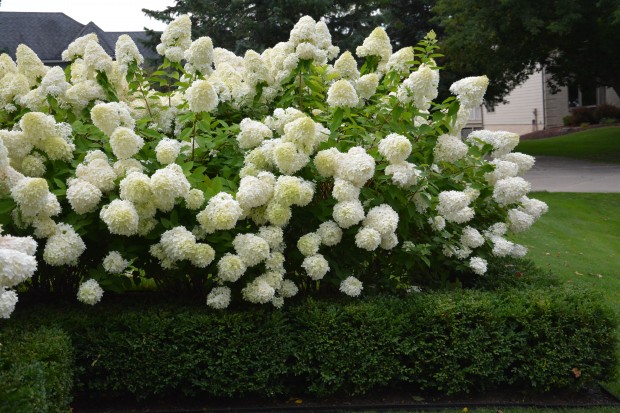 There are lots of other hybrids available. Vardar Valley is an outstanding hardy cultivar of buxus sempervirens. It matures at 1′ to 2′. The leaves have a distinctive blue green color. As it is a slow growing variety, it is not routinely offered for sale at local nurseries. Most of the boxwood sold in my area is grown in regions where the season is long enough to permit 2 flushes of growth per season. This means nursery can get a salable product faster. Boxwood is graded by width-not by height. A boxwood takes about 7 years to grow to an 18″-24″ size. This makes them relatively expensive to buy, compared to other ornamental shrubs that grow quickly.
There are lots of other hybrids available. Vardar Valley is an outstanding hardy cultivar of buxus sempervirens. It matures at 1′ to 2′. The leaves have a distinctive blue green color. As it is a slow growing variety, it is not routinely offered for sale at local nurseries. Most of the boxwood sold in my area is grown in regions where the season is long enough to permit 2 flushes of growth per season. This means nursery can get a salable product faster. Boxwood is graded by width-not by height. A boxwood takes about 7 years to grow to an 18″-24″ size. This makes them relatively expensive to buy, compared to other ornamental shrubs that grow quickly.
 Boxwood is indeed a versatile shrub. They make great hedges, as their growth is uniform, and they are very tolerant of pruning. That tolerance makes them an ideal subject for living sculpture. Boxwood pruned into spheres, squares, cones and cylinders are striking and delightful. The large boxwood in this landscape will be kept pruned in spheres. The small boxwood will be allowed to grow together, and will be pruned flat. This garden will have a much different look in a few years. All of these boxwood are Winter Gem. The fine textured foliage makes them ideal for pruning into a formal, strictly geometric shape.
Boxwood is indeed a versatile shrub. They make great hedges, as their growth is uniform, and they are very tolerant of pruning. That tolerance makes them an ideal subject for living sculpture. Boxwood pruned into spheres, squares, cones and cylinders are striking and delightful. The large boxwood in this landscape will be kept pruned in spheres. The small boxwood will be allowed to grow together, and will be pruned flat. This garden will have a much different look in a few years. All of these boxwood are Winter Gem. The fine textured foliage makes them ideal for pruning into a formal, strictly geometric shape.  Boxwood are quite friendly to other plants. Provided care is taken in the selection of a cultivar for a specific site, they will stay in bounds. These boxwood rectangles are a beautiful foil for the clipped espaliered crab apples. If the face is pruned on a very slight angle out from top to the bottom, they will stay green all the way to the ground. A boxwood which is hard pruned into a specific shape will stay green on the interior.
Boxwood are quite friendly to other plants. Provided care is taken in the selection of a cultivar for a specific site, they will stay in bounds. These boxwood rectangles are a beautiful foil for the clipped espaliered crab apples. If the face is pruned on a very slight angle out from top to the bottom, they will stay green all the way to the ground. A boxwood which is hard pruned into a specific shape will stay green on the interior.
 Boxwood makes a fine tall ground cover under a tree. They are quite shade tolerant. A small landscape such as this is all the more interesting for a change of level. These boxwood are a welcome visual intermediary between the ground plane, and a linden which has grown to substantial size. That they are shade tolerant means they can be sited in lots of places. Naturally grown boxwood make a lovely backdrop for ferns, hostas and shade tolerant perennials. A boxwood provides a green backdrop for the earliest of perennials to appear in the spring. The small textured foliage makes them a great companion for the bigger textured hellebores, and European ginger.
Boxwood makes a fine tall ground cover under a tree. They are quite shade tolerant. A small landscape such as this is all the more interesting for a change of level. These boxwood are a welcome visual intermediary between the ground plane, and a linden which has grown to substantial size. That they are shade tolerant means they can be sited in lots of places. Naturally grown boxwood make a lovely backdrop for ferns, hostas and shade tolerant perennials. A boxwood provides a green backdrop for the earliest of perennials to appear in the spring. The small textured foliage makes them a great companion for the bigger textured hellebores, and European ginger.
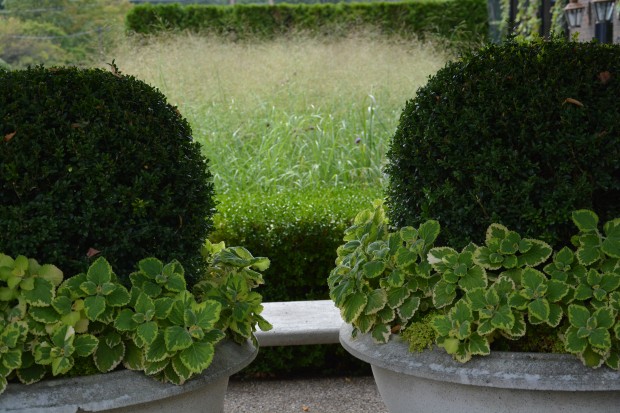 A boxwood would go so far to oblige a gardener who wishes to grow them in containers. They do need large enough containers so there is room to grow. The root ball of a decent sized and well grown boxwood might be larger in diameter that its leafy component. Boxwood in containers need special attention to proper watering. They need to be well watered prior to freezing weather. They will rely on water stored in the stems and leaves to survive they winter, as the water in the container cannot be absorbed when it is frozen. Boxwood in ground has much more widespread moisture available to its roots, especially given how long it takes for the ground to freeze to any significant depth. A boxwood confined to a pot needs regular water.
A boxwood would go so far to oblige a gardener who wishes to grow them in containers. They do need large enough containers so there is room to grow. The root ball of a decent sized and well grown boxwood might be larger in diameter that its leafy component. Boxwood in containers need special attention to proper watering. They need to be well watered prior to freezing weather. They will rely on water stored in the stems and leaves to survive they winter, as the water in the container cannot be absorbed when it is frozen. Boxwood in ground has much more widespread moisture available to its roots, especially given how long it takes for the ground to freeze to any significant depth. A boxwood confined to a pot needs regular water.
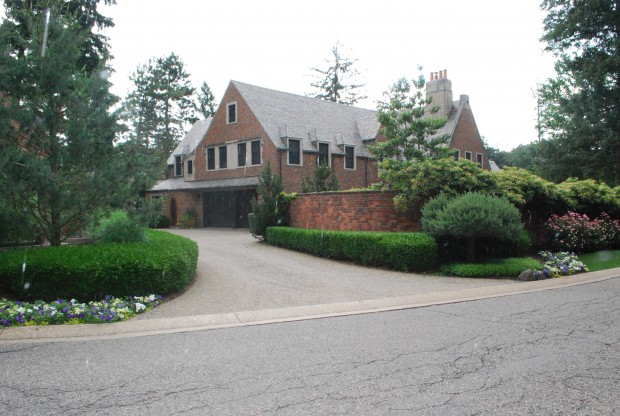 Pruning boxwood takes more than a good eye. A great job invariably involved the setting of level lines. Relatively level boxwood has a forlorn and unfinished look. This boxwood has been pruned level with the horizon, even though the driveway drops down to the street. The boxwood at the bottom of this drive is quite a bit taller than those plants at the top. Level boxwood has a serene and solid look to it.
Pruning boxwood takes more than a good eye. A great job invariably involved the setting of level lines. Relatively level boxwood has a forlorn and unfinished look. This boxwood has been pruned level with the horizon, even though the driveway drops down to the street. The boxwood at the bottom of this drive is quite a bit taller than those plants at the top. Level boxwood has a serene and solid look to it.
 Boxwood can help provide structure to a garden. This densely growing shrub provides a simple and strong contrast to the garden elements. This pruning is loosely formal, and softens the stone wall behind them.
Boxwood can help provide structure to a garden. This densely growing shrub provides a simple and strong contrast to the garden elements. This pruning is loosely formal, and softens the stone wall behind them.
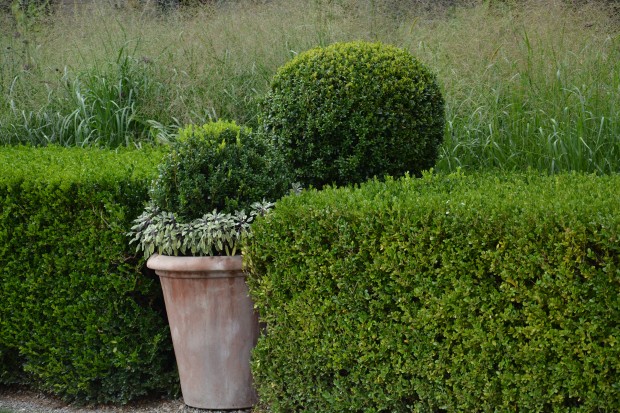 I have written about boxwood plenty of times before – I do like them. It was painful to see how many boxwood in my area were severely damaged or killed outright by our last winter. Some were crushed by the huge snow loads. Others in more exposed locations were damaged by the extreme cold. That cold, in conjunction with sun and wind burned the leaves. Leaves that were completely desiccated, died. It took the coming of the spring weather to see how terrible the damage truly was. Some of the boxwood at the shop died outright. The damaged portions will take years to recover.
I have written about boxwood plenty of times before – I do like them. It was painful to see how many boxwood in my area were severely damaged or killed outright by our last winter. Some were crushed by the huge snow loads. Others in more exposed locations were damaged by the extreme cold. That cold, in conjunction with sun and wind burned the leaves. Leaves that were completely desiccated, died. It took the coming of the spring weather to see how terrible the damage truly was. Some of the boxwood at the shop died outright. The damaged portions will take years to recover.
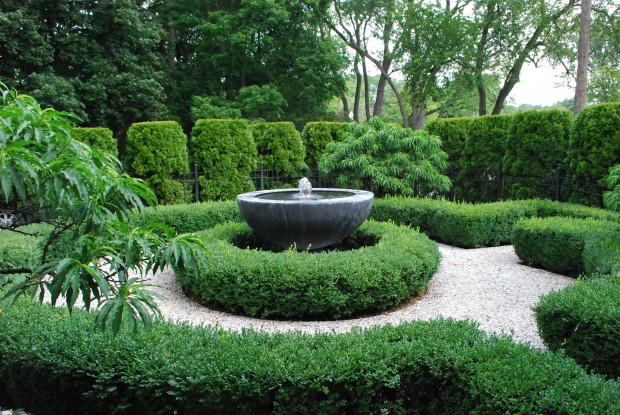 If you have ever hung a boxwood wreath on a shaded door for the winter, or used cut boxwood in winter pots, you know those stems will dry out, but stay green until the temperatures moderate. Like many evergreens, by the time a boxwood shows signs of stress, it is too late to remedy the problem. Now that fall is approaching, I would urge anyone with boxwood in my zone to spray them with an antidessicant. An antidessicant is a waxy coating with will slow the evaporation of water from the leaves in the winter.
If you have ever hung a boxwood wreath on a shaded door for the winter, or used cut boxwood in winter pots, you know those stems will dry out, but stay green until the temperatures moderate. Like many evergreens, by the time a boxwood shows signs of stress, it is too late to remedy the problem. Now that fall is approaching, I would urge anyone with boxwood in my zone to spray them with an antidessicant. An antidessicant is a waxy coating with will slow the evaporation of water from the leaves in the winter.
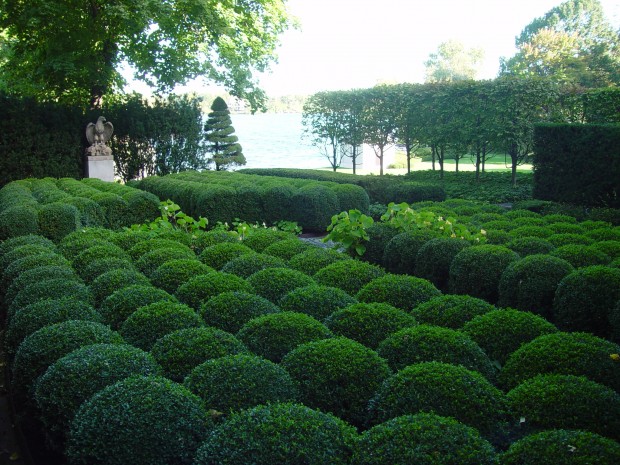 I have heard talk that this winter looks like it may be a very cold winter. Something like last winter. Though boxwood is hardy in this zone, extreme cold, sun, and drying winds can damage them. Though a boxwood may grow out of winter burn, that look is unsightly come spring. If your boxwood are 15 years old, it will be very expensive to replace dead plants with new plants of the size you already own. Last winter was dramatic evidence that winter protection for boxwood is a good idea.
I have heard talk that this winter looks like it may be a very cold winter. Something like last winter. Though boxwood is hardy in this zone, extreme cold, sun, and drying winds can damage them. Though a boxwood may grow out of winter burn, that look is unsightly come spring. If your boxwood are 15 years old, it will be very expensive to replace dead plants with new plants of the size you already own. Last winter was dramatic evidence that winter protection for boxwood is a good idea.  I recommend Vapor Gard. It is widely used as an agricultural antidessicant. The main ingredient is pinolene, a natural polymer made from pine pitch. It can significantly reduce winter burn. You can buy it, dilute it 1 part to 20 parts of water, and spray it on your boxwood. If you have lots of boxwood, your tree care company can spray this for you. It is best done on a dry day, before the weather drops regularly into the low forties. The polymer coating will protect those leaves over the winter, and help them retain moisture. Vapor Gard is a natural and non toxic spray widely used on crops, including cherries. It is an easy way to protect your investment. Do read the label-it is not appropriate for every and any plant. I plan to spray all of my boxwood with it soon; one application will protect them the entire winter. The boxwood pictured above from this past spring-heartbreaking. Interested further? http://www.cdms.net/LDat/ld06L002.pdf
I recommend Vapor Gard. It is widely used as an agricultural antidessicant. The main ingredient is pinolene, a natural polymer made from pine pitch. It can significantly reduce winter burn. You can buy it, dilute it 1 part to 20 parts of water, and spray it on your boxwood. If you have lots of boxwood, your tree care company can spray this for you. It is best done on a dry day, before the weather drops regularly into the low forties. The polymer coating will protect those leaves over the winter, and help them retain moisture. Vapor Gard is a natural and non toxic spray widely used on crops, including cherries. It is an easy way to protect your investment. Do read the label-it is not appropriate for every and any plant. I plan to spray all of my boxwood with it soon; one application will protect them the entire winter. The boxwood pictured above from this past spring-heartbreaking. Interested further? http://www.cdms.net/LDat/ld06L002.pdf
